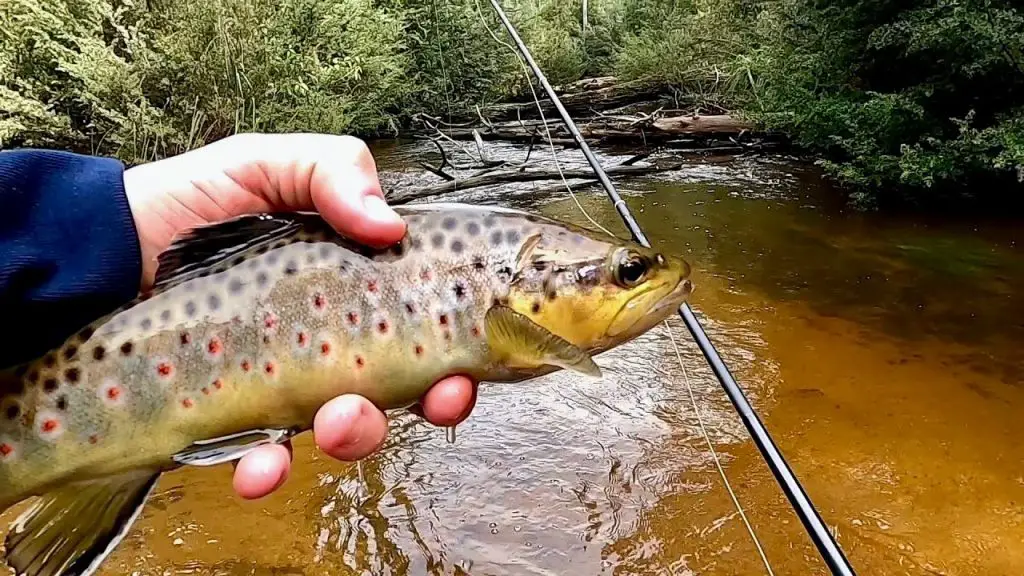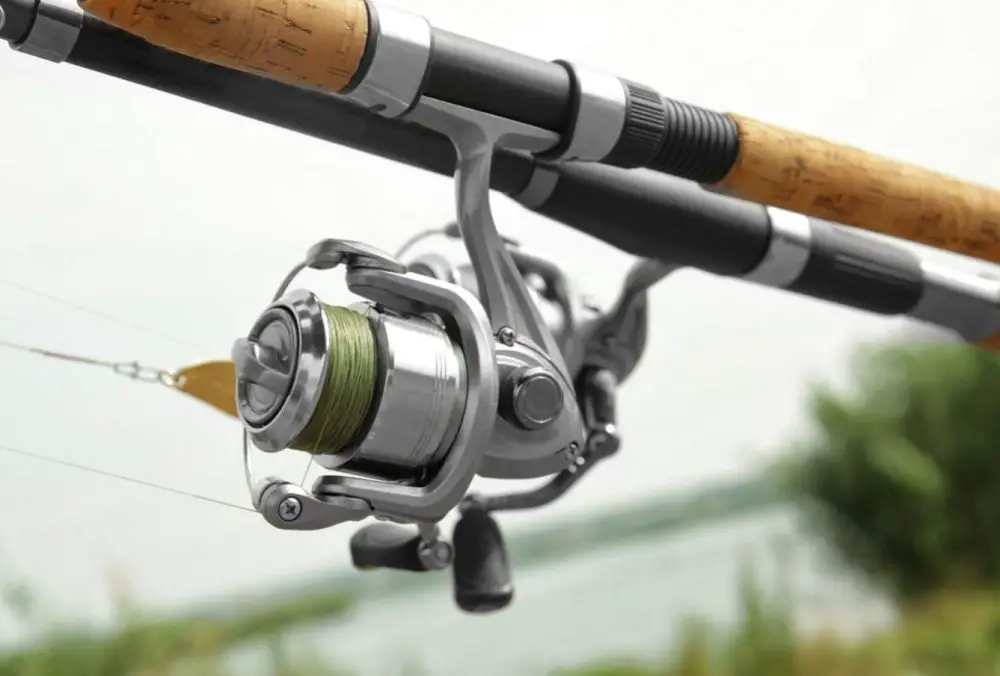The best fishing line color for trout fishing is clear, as it provides low visibility and is nearly invisible underwater, minimizing fish disturbance. Other suitable colors include green, blue, and red, which blend well in weedy waters, clear blue-tinted waters, and at depth, respectively.
You could say that fishing and picking out fishing line at the shop are two hobbies. There is a reason why fishing shops have so many different types of fishing line. You will need a different fishing line depending on the type of water, environment, and even the fish species. Lines vary widely in material, heft, finish, and color.
When catching trout, the type and color line you use is crucial because trout are line shy.
Trout fishing is one of the most popular forms of fishing. Learning the ins and outs of catching these prized fish takes some time. Hopefully, this guide can help you get ahead when fishing for trout.
| Rank | Line Color | Visibility | Suitability for Trout Fishing | Star Rating |
|---|---|---|---|---|
| 1 | Clear | Low visibility, nearly invisible | Excellent | ⭐⭐⭐⭐⭐ |
| 2 | Green | Good in green or weedy waters | Good | ⭐⭐⭐⭐ |
| 3 | Blue | Good in clear, blue-tinted waters | Good | ⭐⭐⭐⭐ |
| 4 | Red | Becomes less visible at depth | Good | ⭐⭐⭐⭐ |
| 5 | Yellow | Highly visible, easy to track | Fair to Poor | ⭐⭐ |
Table of Contents
What Colors Can Trout See?
When figuring out your trout fishing set-up, you need to think from the fish’s perspective, as silly as that sounds. It doesn’t matter what you see but what the fish can see.
Unfortunately for anglers, trout have very good vision. This includes color vision, although colors look very different underwater (more later). Although scientists can’t exactly ask a trout what its favorite color is, they can look at trout anatomy to learn more about the fish’s color vision. Trout have rods and cones in their eyes for seeing color, just like humans. In fact, trout can probably see more colors than people because they have cones in their eyes to detect ultraviolet frequencies.
Trout can see almost all colors, including red, yellow, blue, and green. That means you must carefully choose your lures and fishing line when fishing for trout. Choosing the right fishing line is much easier when catching other fish with worse eyesight.

What Colors Are Visible at Different Depths?
One factor that affects the visibility of the fishing line you are using is the depth of the water. The distance from a light source and the water changes how animals see color. All colors begin to fade when they go underwater because the light waves get dispersed by the water.
As you go deeper, colors with longer wavelengths get refracted, meaning that after a certain depth, they stop being visible. Here is a rule of thumb about which colors are visible at different depths:
- At 15 feet: All colors except red
- At 25 feet: All colors except red and orange
- At 45 feet: Green and blue
- 75+ feet: Blue only
In lakes, trout will live at all depths. You may find lake trout in very deep lakes at depths of over 100 feet! That means they live in an environment with no colors besides blue and black.
That does not mean you can use any color since the trout won’t see it. When colors aren’t visible, the objects appear as a dark shape in the water. It makes the contrast even more noticeable, making the trout more likely to avoid your line.

Are Trout Sensitive to the Color of Fishing Line?
When picking out the best fishing line for catching trout, you need to think of a few different factors, including:
- Visibility
- Sensitivity
- Stretch
- Strength
There are a lot of guides to picking out the best fishing line. However, not all of them talk about the importance of color.
Trout have some of the best color vision among freshwater fish. They are also incredibly line shy. Due to their natural hunting instincts and history as a target for anglers, trout have evolved to be alert for lines and avoid them whenever possible.
That means the color matters a lot when picking out the best fishing line for catching trout. You want line that will blend in with the water you are fishing in. The goal is to attract the trout to the lure but not alert them to the presence of the line.
Besides the color, you want a fishing line that has a nearly invisible finish. The best fishing lines for catching line shy fish such as trout are fluorocarbon lines. These lines are nearly invisible and highly sensitive when picking up a bite.
The Best Color Fishing Line for Trout
Determining the best color fishing line to use when catching trout depends greatly on the water conditions you are going out in.
Clear
A clear fluorocarbon is the best line for catching trout in most situations. This line is nearly invisible in clear lakes and rivers. Trout prefer to live in clear bodies of water, so clear line is the most likely to get a bite. You can use a clear line for your fishing line or just as the finisher attached to a stronger braided line.
Green
When fishing for trout, you want to match your fishing line to the color of the water. If the water is stained green, then use a green monofilament line. Many fresh bodies of water have a greenish tint instead of being perfectly clear because of algae and water plants. In slightly brackish water, clear line will stand out.

Blue
Blue is another good line color for slightly murky waters. When fishing in blue-tinted waters, this line color blends in with the background. Blue blends in with the water even close to the bottom when other colors fade out.
Yellow
Yellow works in very specific circumstances. In muddy waters, yellow blends in better than a clear or green line. However, avoid it for clear waters as it acts like a beacon telling trout to stay away.
Final Thoughts
Trout are some of the cleverest freshwater fish, but you can outsmart them by getting the right line. Make sure your line blends in with the waters you are fishing in. A clear line works best in most circumstances, but sometimes you need green, blue, or yellow to match the tinge of the water.
